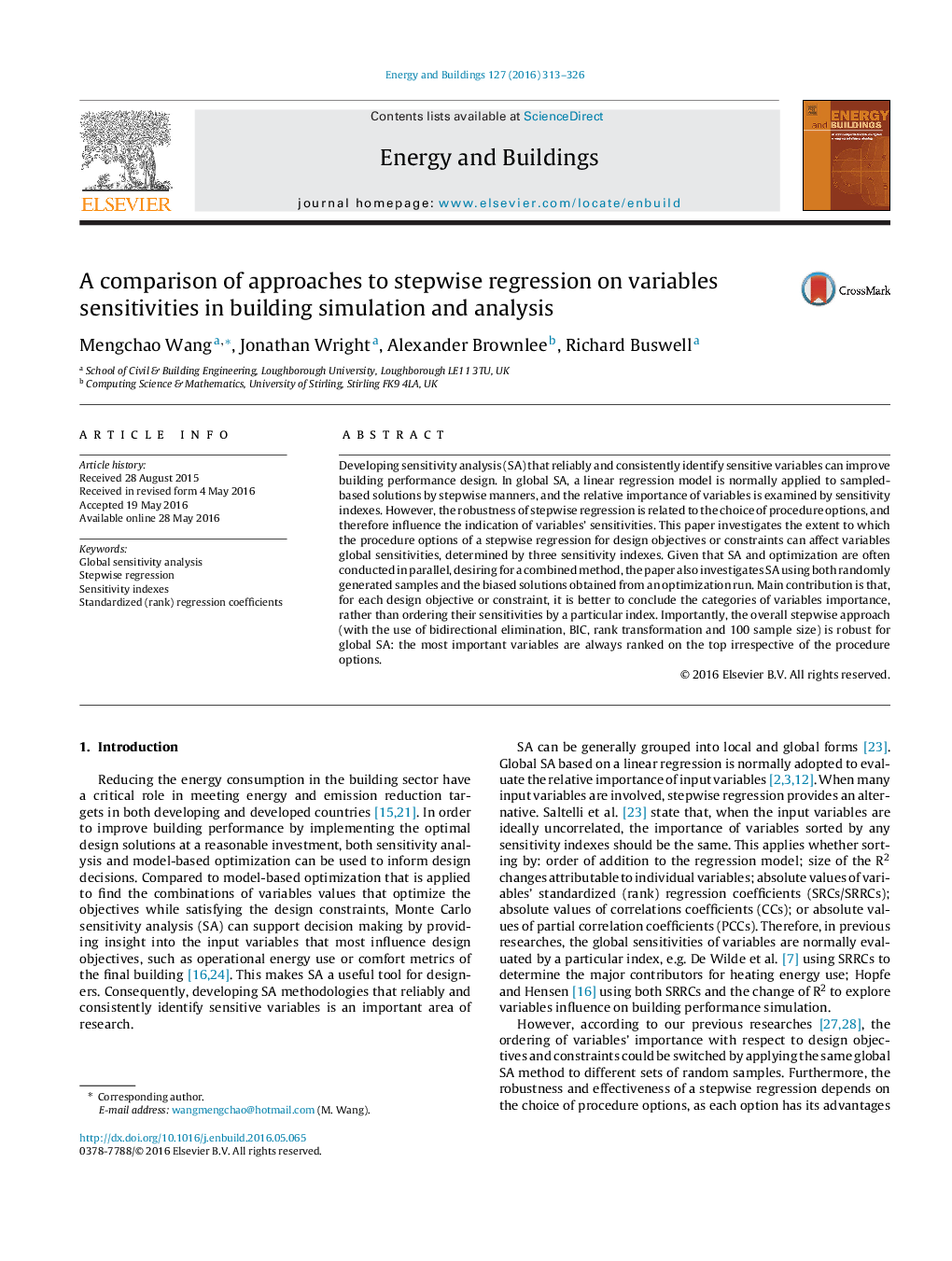| کد مقاله | کد نشریه | سال انتشار | مقاله انگلیسی | نسخه تمام متن |
|---|---|---|---|---|
| 261984 | 504007 | 2016 | 14 صفحه PDF | دانلود رایگان |
• The robustness of stepwise regression is irrespective of selection approach.
• The linear regression model constructed by AIC has a high risk of overfitting, especially when the sample size is small.
• A mixture of discretized-continuous and categorical variables can be used for global SA.
• For stepwise regression, increasing sample size can identify more sensitive variables, but the importance of highly sensitive variables remains the same.
• The importance of variables for design objectives and constraints is better to be classified through more than one sensitivity indexes.
Developing sensitivity analysis (SA) that reliably and consistently identify sensitive variables can improve building performance design. In global SA, a linear regression model is normally applied to sampled-based solutions by stepwise manners, and the relative importance of variables is examined by sensitivity indexes. However, the robustness of stepwise regression is related to the choice of procedure options, and therefore influence the indication of variables’ sensitivities. This paper investigates the extent to which the procedure options of a stepwise regression for design objectives or constraints can affect variables global sensitivities, determined by three sensitivity indexes. Given that SA and optimization are often conducted in parallel, desiring for a combined method, the paper also investigates SA using both randomly generated samples and the biased solutions obtained from an optimization run. Main contribution is that, for each design objective or constraint, it is better to conclude the categories of variables importance, rather than ordering their sensitivities by a particular index. Importantly, the overall stepwise approach (with the use of bidirectional elimination, BIC, rank transformation and 100 sample size) is robust for global SA: the most important variables are always ranked on the top irrespective of the procedure options.
Journal: Energy and Buildings - Volume 127, 1 September 2016, Pages 313–326
